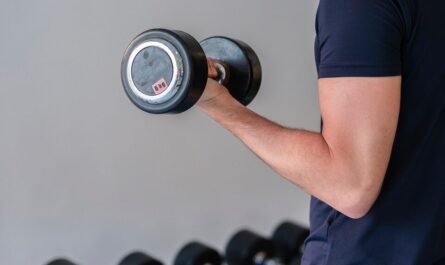Our bodies communicate much more than words ever can. From the way we carry ourselves to the energy we project, physical posture is a window into our emotional and psychological state. More than just a reflection of how we feel, our posture actively shapes our self-esteem and confidence. When you stand tall—with an open chest, squared shoulders, and a lifted head—you not only appear more confident but also feel it. This comprehensive exploration delves into the fascinating connection between physical posture and self-esteem, examining how the way we hold our bodies can boost our inner confidence and transform our lives.
1. The Interplay Between Posture and Self-Esteem
A. Posture as a Reflection of Inner State
Physical posture is often seen as the mirror of our inner world. When we feel confident, happy, or powerful, our bodies naturally assume a more upright and expansive posture. Conversely, feelings of insecurity, sadness, or defeat often manifest in slouched or closed-off body language. Studies have shown that these physical expressions are not merely reflective but also influential—they send signals to our brains that can reinforce our emotional state.
- Visual Expression of Confidence: A person with an upright posture is often perceived as self-assured and ready to take on challenges. This outward expression not only influences how others see us but also impacts our own self-perception.
- Body-Mind Feedback Loop: The concept of embodied cognition suggests that the body and mind are deeply interconnected. When you adopt a posture of confidence, it can trigger a cascade of positive thoughts and emotions. This, in turn, builds self-esteem and encourages you to engage more boldly with the world.
B. Psychological Mechanisms at Play
The relationship between posture and self-esteem is underpinned by several psychological and physiological mechanisms. Our posture influences the release of hormones, impacts our breathing, and even affects brain activity.
- Hormonal Effects: Research indicates that adopting an expansive posture (often called “power posing”) can increase testosterone levels, which is associated with feelings of dominance and confidence, while decreasing cortisol levels, a stress hormone.
- Neurobiological Impact: Upright posture enhances blood flow and oxygenation, which can improve cognitive function and reduce feelings of lethargy or depression.
- Self-Fulfilling Prophecy: When you consciously adopt a confident posture, your brain begins to interpret that signal as a marker of self-assurance. Over time, this can create a self-fulfilling prophecy, where you genuinely feel more capable and empowered.
2. Research Findings on Posture and Confidence
A. The Power Pose Debate
One of the most talked-about studies in this field involved the “power pose” experiment, where participants were asked to adopt expansive postures for a few minutes. The results indicated that these poses could lead to hormonal changes associated with increased confidence. While the findings sparked debate regarding their replicability, subsequent research has provided additional evidence that posture plays a significant role in shaping our mood and self-perception.
- Critiques and Confirmations:
Some critics argue that the impact of power posing may be more psychological than biological. Regardless, the consensus is that even if the hormonal changes are modest, the boost in self-confidence and positive mindset is substantial. - Practical Applications:
Many athletes, public speakers, and professionals have incorporated posture-improving practices into their routines, reporting enhanced performance and reduced anxiety in high-pressure situations.
B. Longitudinal Studies and Real-World Applications
Long-term studies have explored how changes in posture over time can affect overall self-esteem and social interactions. Consistent practice of maintaining good posture has been linked to improvements in mental health and greater social confidence.
- Improved Social Interactions:
People who consciously work on their posture often find that they are treated with more respect and that their social interactions are more positive. A confident appearance can lead to more opportunities both personally and professionally. - Enhanced Personal Relationships:
When you feel good about your body, it shows in how you interact with others. Improved posture not only boosts your self-esteem but also enhances the quality of your personal relationships by fostering a more positive and engaging presence.
3. Practical Strategies to Improve Posture and Boost Self-Esteem
A. Daily Habits for Better Posture
Transforming your posture into one that reflects confidence requires practice and consistency. Here are some practical strategies to help you stand tall—both literally and metaphorically.
1. Mindful Posture Checks
Throughout the day, take moments to check in with your body. Are you slouching at your desk? Is your head tilted forward when you walk? Simple reminders can help you adjust your posture before it becomes a habit.
- Set Reminders: Use your phone or a smartwatch to remind you to stand up, stretch, and correct your posture every hour.
- Visual Cues: Place a sticky note on your computer or mirror that reminds you to “Stand Tall” or “Straighten Up.”
2. Strengthening and Flexibility Exercises
Physical exercises can greatly improve your posture by strengthening the muscles that support your spine and increasing flexibility.
- Core Workouts: A strong core is essential for good posture. Incorporate exercises such as planks, abdominal crunches, and Pilates into your routine.
- Back and Shoulder Exercises: Strengthen your back and shoulder muscles with rows, shoulder presses, and reverse flyes. These exercises help counteract the forward-slumping posture common in sedentary lifestyles.
- Stretching: Regular stretching, particularly of the chest and hip flexors, can relieve tension and encourage an upright stance.
3. Ergonomic Adjustments
The environments in which you work and relax have a significant impact on your posture. Making ergonomic adjustments can help maintain a healthy alignment.
- Workstation Setup: Ensure that your desk, chair, and computer monitor are set up to support an upright posture. Your monitor should be at eye level, and your chair should offer adequate back support.
- Home Environment: Arrange your living space to promote movement. Use supportive seating and invest in ergonomic accessories like lumbar pillows and adjustable desks.
- Mindful Movement: Practice mindful movement in your daily activities. Whether you’re walking, standing, or sitting, be aware of your body’s alignment and make adjustments as needed.
B. Mindfulness and Meditation for Postural Awareness
Mindfulness meditation can enhance your awareness of your body, making it easier to identify when your posture is slipping. Regular mindfulness practice can help you cultivate a habit of noticing and correcting your alignment throughout the day.
- Body Scan Meditation: This technique involves mentally scanning your body from head to toe, noticing any areas of tension or misalignment. A body scan can serve as a reminder to relax and adjust your posture.
- Mindful Breathing: Deep, mindful breathing not only reduces stress but also encourages an open, upright posture. Focus on expanding your chest with each inhale, which naturally lifts your shoulders and improves alignment.
- Yoga and Pilates: Both yoga and Pilates emphasize body awareness, balance, and proper alignment. Regular practice can lead to lasting improvements in posture and contribute to a more confident demeanor.
C. Positive Affirmations and Visualization
In addition to physical adjustments, the way you think about your body can have a profound impact on your posture. Positive affirmations and visualization techniques help reinforce a confident image of yourself.
- Daily Affirmations: Begin your day with affirmations such as “I stand tall with confidence” or “I am strong and capable.” Repeating these phrases can rewire your mindset and encourage a more positive physical presence.
- Visualization Techniques: Visualize yourself standing with perfect posture. Imagine the feeling of strength, energy, and confidence that comes with an upright stance. This mental practice can create a powerful association between self-confidence and physical posture.
- Mirror Work: Spend a few minutes each day looking into a mirror and practicing your affirmations. Observe your posture, smile, and embrace the image of a confident, self-assured person.
4. The Broader Impact: How Improved Posture Enhances Your Life
A. Enhanced Physical Health
Good posture is not only about looking confident—it’s also critical for your overall physical health. By maintaining an upright position, you reduce the strain on your spine, neck, and muscles, which can help prevent chronic pain and musculoskeletal issues.
- Reduced Back and Neck Pain: Proper posture alleviates undue stress on your vertebrae and surrounding muscles, decreasing the risk of chronic pain.
- Improved Breathing: An upright posture allows for better lung expansion, improving oxygen intake and overall energy levels.
- Better Digestion: Standing and sitting with proper alignment can improve digestion by ensuring that your internal organs have adequate space and are not compressed.
B. Boosted Mental and Emotional Well-Being
The connection between body and mind is profound. When you stand tall, not only does your body benefit, but your mental state does as well. The act of correcting your posture can trigger a cascade of positive psychological effects.
- Increased Self-Esteem: Regularly practicing good posture reinforces a positive self-image. When you feel confident in your physical appearance, it spills over into other areas of your life.
- Enhanced Mood: Improved posture has been linked to lower levels of stress and anxiety. The physical act of standing tall can make you feel more empowered and ready to face challenges.
- Resilience and Assertiveness: A confident posture helps build resilience. It can also enhance your ability to assert yourself in social and professional situations, leading to more effective communication and stronger relationships.
C. Social and Professional Advantages
The benefits of improved posture extend beyond personal health—they also have social and professional ramifications. People who carry themselves with confidence are often perceived as more capable and trustworthy, which can open doors in both personal and professional realms.
- Positive First Impressions: A confident, upright posture creates a favorable impression, which can be invaluable in job interviews, networking events, and social gatherings.
- Leadership and Influence: Leaders with strong, confident body language tend to inspire trust and motivate others. Improved posture can enhance your presence in group settings and boost your influence.
- Enhanced Communication: As you become more aware of your body language, you’ll also become a more effective communicator. The non-verbal cues you project can reinforce your words and help build deeper connections with those around you.
5. Real-Life Success Stories and Transformative Journeys
A. The Story of Sarah: From Slouching to Standing Tall
Sarah, a professional in a fast-paced urban environment, struggled with chronic back pain and low self-esteem due to poor posture. Through a combination of daily mindfulness exercises, yoga classes, and regular posture checks at work, she gradually transformed her physical stance. Over several months, Sarah reported not only a significant reduction in pain but also an improvement in her self-confidence. Her journey illustrates how small, consistent changes in posture can lead to profound improvements in both physical health and mental well-being.
B. Mark’s Transformation: How Posture Changed His Life
Mark, an entrepreneur known for his dynamic presence in business meetings, realized that his slouched posture was undermining his authority and self-image. By incorporating strength training, specifically focusing on core and back exercises, along with practicing power poses before important meetings, Mark experienced a dramatic shift in his performance. His newfound physical confidence translated into more assertive communication and better leadership. Mark’s story demonstrates the tangible benefits that improved posture can have on professional success and personal growth.
C. Couples’ Journey to a Healthier Relationship
For many couples, improving posture isn’t just about individual health—it can also enhance their relationship. A couple, both dealing with chronic stress and low energy, decided to start a joint fitness regimen that included yoga and mindfulness meditation. Over time, as they worked together to improve their posture and embrace a healthier lifestyle, they noticed a positive shift in their relationship dynamics. Better posture led to improved physical health, increased energy, and a shared sense of achievement that deepened their emotional connection. Their collaborative journey highlights the ripple effect that physical well-being can have on all aspects of life, including romantic partnerships.
6. Tips for Sustaining a Posture-Positive Lifestyle
A. Routine Check-Ins and Adjustments
Maintaining good posture is an ongoing effort. Here are a few strategies to ensure that your progress remains consistent:
- Set Daily Reminders: Use your phone or a sticky note to remind you to check your posture periodically throughout the day.
- Ergonomic Workspaces: Adjust your workstation to promote good posture. Ensure that your chair, desk, and computer monitor are set up to support an upright position.
- Regular Exercise: Incorporate exercises that strengthen your core, back, and shoulder muscles into your routine. Regular workouts not only improve posture but also enhance overall physical fitness.
B. Continuous Learning and Adaptation
As you embark on your journey to stand tall with confidence, remain open to learning new techniques and adapting your practices as needed.
- Stay Informed: Read articles, watch tutorials, and consider taking classes on posture improvement, yoga, or Pilates.
- Seek Feedback: Ask friends or colleagues for feedback on your posture. Sometimes an outside perspective can help you correct habits you may not notice.
- Monitor Your Progress: Keep a journal or use a posture app to track your improvements. Documenting your journey can provide motivation and reveal patterns that guide further improvements.
C. Embracing a Holistic Approach
Remember that posture is just one aspect of your overall well-being. A holistic approach to self-care that includes physical, emotional, and mental health will have the greatest impact on your self-esteem.
- Balanced Diet: Eating nutritious foods that support muscle and bone health can contribute to overall strength and vitality.
- Adequate Sleep: Quality sleep is essential for recovery and maintaining good posture. Ensure you have a sleep-friendly environment and establish a consistent sleep routine.
- Stress Management: Techniques such as mindfulness meditation, deep breathing, and even hobbies that bring joy can reduce stress, which in turn improves your posture by preventing tension from building up in your muscles.
7. Conclusion: Standing Tall as a Path to Empowerment
The connection between physical posture and self-esteem is a powerful reminder that how you carry yourself affects more than just your physical appearance—it influences your mental, emotional, and social well-being. By consciously adopting a posture that exudes confidence, you reinforce a positive self-image and create a feedback loop that enhances your overall quality of life.
Embracing techniques to improve your posture, from strength exercises and ergonomic adjustments to mindfulness and positive affirmations, is a transformative journey that goes beyond the physical. It’s a pathway to greater self-confidence, improved communication, and a more resilient mindset. As you learn to stand tall, both literally and metaphorically, you unlock the potential for a more empowered, fulfilled, and connected life.
Whether you’re a professional looking to boost your presence in the boardroom, an individual seeking to overcome personal insecurities, or someone who simply wants to feel better in your own skin, the journey toward improved posture and self-esteem is one worth pursuing. With consistent effort, patience, and a holistic approach to wellness, you can create lasting change that resonates across every aspect of your life.
So, take a deep breath, straighten your spine, and step into the world with confidence. Every small adjustment is a step toward a healthier, happier you—one where your body, mind, and spirit are aligned in the pursuit of your fullest potential. Stand tall, embrace your journey, and let your posture be a reflection of the inner strength that defines you.



